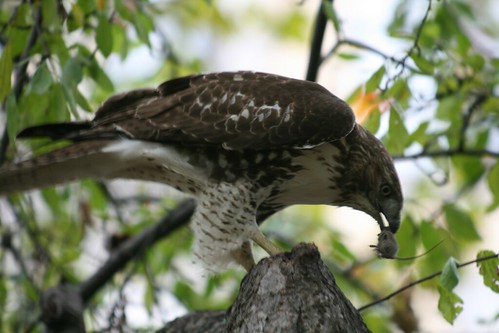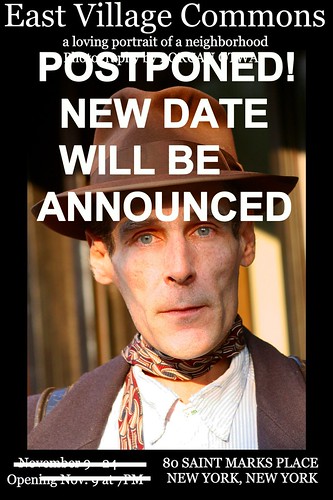
Mike Amico
Mike Amico spends a lot of time sitting in front of the building in which he lives, on Saint Marks place feeding pidgins, complementing pretty women, missing his beautiful wife, and telling younger folks what things were like when...
Mike deserves some time to relax and enjoy life. On June 6, 1944, the first day of the Normandy Invasion, a tough kid from a tougher neighborhood ran through the surf into a confusion of unimaginable noise, fear and death. Mike's eyes gaze off somewhere else when he remembers that day. He does not say much, other than, "that was some day..." and he remembers how many of the others died. They were young men with whom he trained, with whom he became friends, on whom he depended and who depended on him. He does not talk much about the worst of the war. He was there, saw it, lived it, but prefers to remember his friends and family, his young wife, who is always young and pretty in his memories.
Mike grew up in the neighborhood in which he still lives, it was called the Lower East Side then. Italian kids like Mike often joined gangs, had heroes who were "good fellows" or were "made men." He talks about mob hits on first avenue, long ago, ethnic battles and fights over turf. As a young man, he also saw his ancestral home, Italy. He walked across Italy with his unit, driving the armies of fascism out. He remembers the girls, the wine, the beautiful land, and he remembers the terrible fighting and loss. Mike, however, is not one of those vets who dwells on the worst of war, he remembers trying to grab hold of a little life in the face of all that death. He greets passing tourists in their own language, Germans, Italians, French, to him the divisions of war are in the past. He laughs and says to them that he learned their language when he was there ... during the war.
Mike often thinks of his brother in law, who he remembers was like his own brother to him. It worried him when his sister's husband was posted to Mike's battalion. "I felt like I should look out for him..." Mike remembers. He also remembers hearing the explosion that killed him. "I felt terrible, but the strange thing is I couldn't cry."
Mike came home and his wife had four children. One son, Michael died as a baby. His two daughters, Maria and Jackie married well. His surviving son Louie incurred his anger when he volunteered to go to Vietnam straight from high school. He wanted his son to go to college, and he tried to dissuade him by telling him about the terrible things he saw when he went to war. But, it was too late. His son went to Vietnam, and returned, suffering the effects of Agent Orange, a defoliant used to clear jungles, which was found to produce a host of serious health issues years after exposure. Mike is no longer angry, only worried for his son.
Mike is now retired from his job, driving a truck for a restaurant supply company. In his early 80s, that war, that time which seems so long ago, so unique in its brutality and evil, still lives in Mike's eyes as he feeds his pidgins on his Saint Marks Place stoop.
James McCowan lives in the neighborhood as well. He was born and grew up in New York City. He lives in the East Village and takes his dog to the Tompkins Square Park dog run. I met him there on Veteran's Day, near to that 11th hour, of the 11th day of the 11th month. He has no fond memories of Vietnam where he fought when he, like Mike Amico, was a young man. He has no stories to share, other than with other vets. He has nothing to say to anyone was has was not there, or has not been to war. He remembers how no one knew what to say, what to do, when he returned.
He is happy that folks seem to be treating the new returning vets better, but he adds, "I feel for the kids today, their sacrifice, and I honor it."
His silence speaks as much as Mike's memories. His is a silent generation of former warriors.

James McCowan








